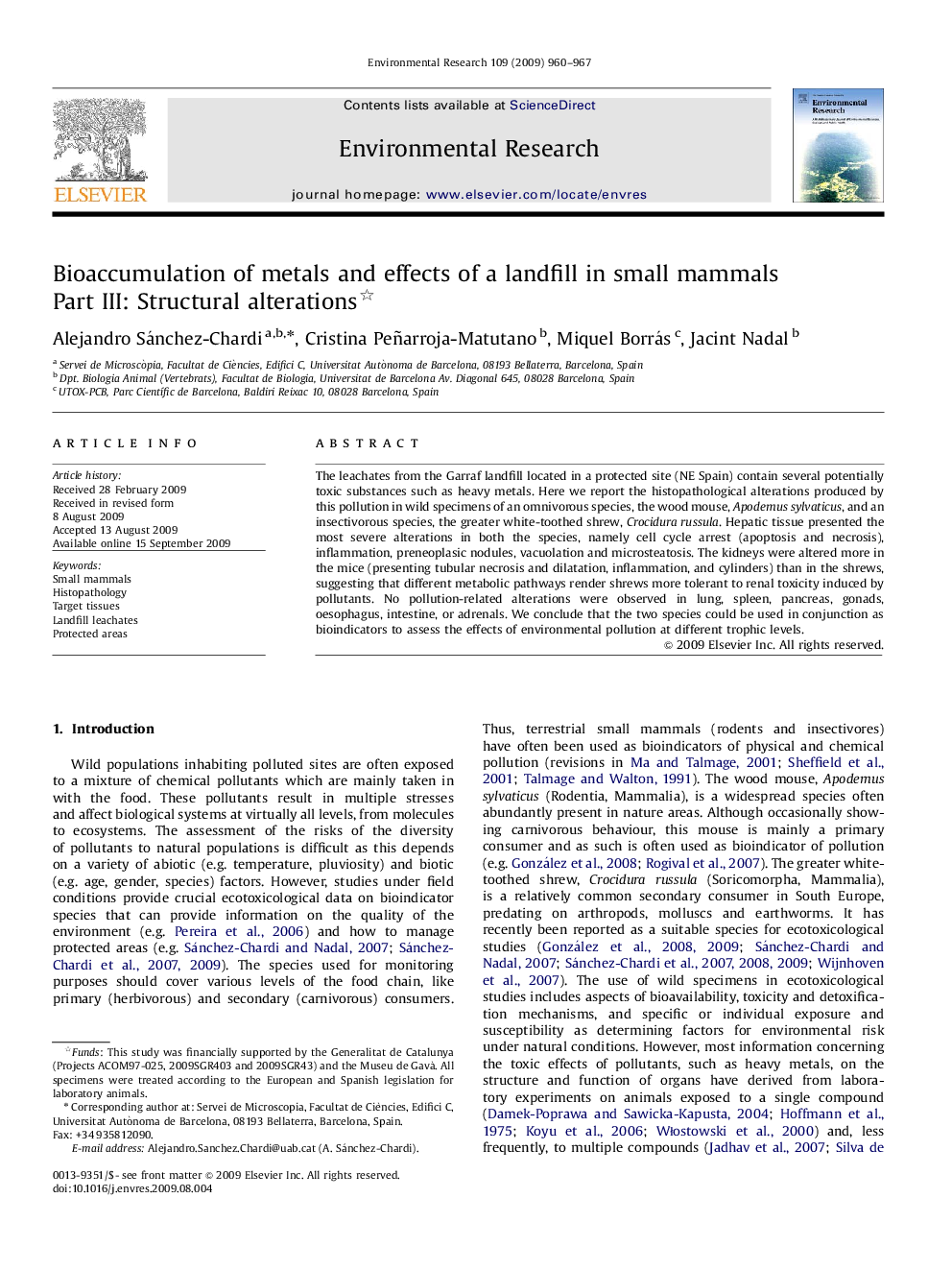| Article ID | Journal | Published Year | Pages | File Type |
|---|---|---|---|---|
| 4470295 | Environmental Research | 2009 | 8 Pages |
The leachates from the Garraf landfill located in a protected site (NE Spain) contain several potentially toxic substances such as heavy metals. Here we report the histopathological alterations produced by this pollution in wild specimens of an omnivorous species, the wood mouse, Apodemus sylvaticus, and an insectivorous species, the greater white-toothed shrew, Crocidura russula. Hepatic tissue presented the most severe alterations in both the species, namely cell cycle arrest (apoptosis and necrosis), inflammation, preneoplasic nodules, vacuolation and microsteatosis. The kidneys were altered more in the mice (presenting tubular necrosis and dilatation, inflammation, and cylinders) than in the shrews, suggesting that different metabolic pathways render shrews more tolerant to renal toxicity induced by pollutants. No pollution-related alterations were observed in lung, spleen, pancreas, gonads, oesophagus, intestine, or adrenals. We conclude that the two species could be used in conjunction as bioindicators to assess the effects of environmental pollution at different trophic levels.
